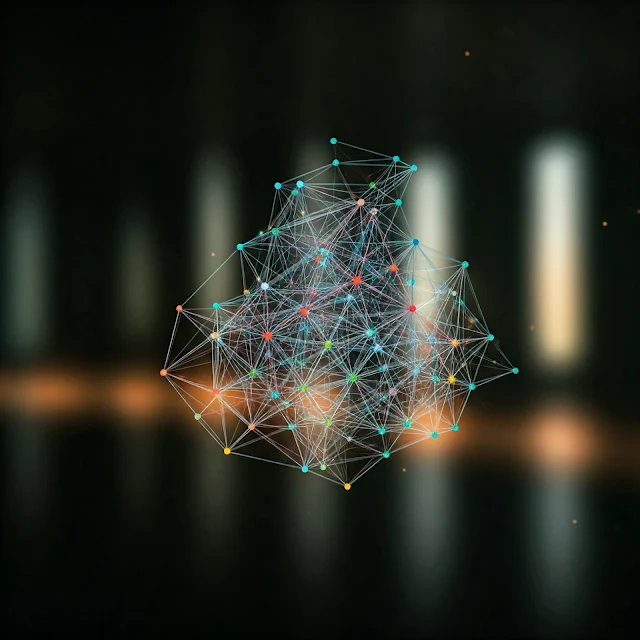Graph Neural Networks (GNNs) are a type of neural network. They work with data that has relationships. This data is represented as a graph. A graph consists of nodes (objects) and edges (connections). GNNs learn patterns from these relationships.
 |
| Image: Generated by AI |
Graph Neural Networks (GNNs) are like computers that can understand these kinds of diagrams. They're a type of artificial intelligence that can learn from data that has relationships, like as your friend diagram.
Here's a simpler breakdown:
Nodes - are the objects or things in your data, like the people in your friend diagram.
Edges - are the connections or relationships between the objects, like the friendships in your diagram.
GNNs look at these connections to understand the data better.
Types:
Graph Convolutional Networks (GCNs):
These networks gather and combine information from neighboring nodes in a graph. It's like learning from your immediate friends to understand more about you.
Graph Attention Networks (GATs):
These networks assign different levels of importance to different neighboring nodes. It focuses more on important connections, just like how you might pay more attention to advice from a close friend than a distant acquaintance.
Graph Recurrent Networks (GRNs):
These networks process graph data over time. They keep track of changes and updates in the graph, similar to remembering past interactions and adjusting based on new information.
Uses:
- Social Network Analysis: Understanding connections and influences in social networks.
- Recommendation Systems: Improving recommendations by analyzing user-item interaction graphs.
- Biology and Chemistry: Analyzing molecular structures and interactions.
Examples:
Fraud Detection: Identifying fraudulent activities in financial transaction networks.
Traffic Prediction: Predicting traffic flow by analyzing road networks.
Knowledge Graph Completion: Filling missing links in knowledge graphs.